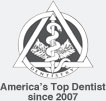Treatments for Gum Disease

If you suspect you have gum disease or are certain of it, do not panic. There are several treatment options available. Our oral health professionals are here to gauge the extent of your gum disease and pinpoint the optimal treatment approach. The severity of the gum disease and the type of gum disease ultimately determine which treatment is best. Here is a quick look at the most common treatments for those who have gum disease.
Perio Protect
Some offices provide the Perio Protect procedure. This treatment is custom made for those afflicted with periodontal disease. The Perio Protect method relies on a fully customized set of trays that transmit medication straight to the gums to combat those nasty pathogens that spur gum disease. This treatment typically produces rapid results, so patients do not have the wear the trays for an extended period of time or at a high frequency. Have the prosthodontist examine your mouth to determine if you are a suitable candidate for Perio Protect. If the prosthodontist determines you can benefit from Perio Protect, molds of your mouth will be taken to create trays tailored to the nuances of your unique teeth and gums.
In Some Cases, a Professional Cleaning Will Suffice
If the prosthodontist catches your gum disease early enough before there is considerable damage to the supporting structure, you are in luck. A professional cleaning might suffice in this case. Just be sure to listen closely as the prosthodontist discusses your oral health as these tips will help prevent a return of gum disease.
A Deep Cleaning
The deep cleaning performed to combat gum disease is known as scaling and root planing. This treatment involves the dentist's removal of plaque and tartar down to the lower portion of the periodontal pocket. This treatment is often performed across several visits. The root surface portion of the teeth is planed or smoothed to ensure the gum tissue can heal and subsequently reconnect with the teeth.
A subsequent dental visit will be necessary following the scaling and root planing treatment. The prosthodontist uses this appointment as an opportunity to analyze the gums to determine if they have healed properly. The prosthodontist will measure your periodontal pockets. If the pockets have deepened and the supporting bone is diminished, additional treatment might be required.
Periodontal Surgery
If the pockets do not fully heal following scaling and root planing, the prosthodontist might determine periodontal surgery is the best option. This surgery provides the prosthodontist with the opportunity to eliminate plaque and tartar from those portions of the mouth that are difficult to reach. The prosthodontist then stitches the gums back into place. This surgery also serves the purpose of decreasing pocket depth to facilitate the cleaning of teeth. Furthermore, surgery might also prove necessary if the bone has been compromised by the gradual progression of the periodontal disease.
What About Home Treatment Options?
There is no way to cure gum disease on your own with at-home treatments. You will have to meet with a professional prosthodontist to have this problem addressed in-depth. However, there are a few things you can do on your own at home to minimize your symptoms and decrease the odds of the disease progressing. If you are not already flossing and brushing two times per day, start doing so today. Cleaning your teeth at this frequency cuts down on the amount of plaque that accumulates along the teeth. The buildup of plaque is one of the top causes of gum disease.
Be sure to rinse out your mouth with a high-quality mouthwash that is proven to be an effective treatment against gingivitis. Do not hesitate to ask your primary care physician for a script so you can use an antimicrobial mouth rinse. It will also help to minimize your consumption of sugary drinks and foods as both cause tooth decay, making gum disease worsen that much more.
Periodontal Pocket Reduction
Periodontal pocket reduction is an option for those who find their gum tissue does not fit nice and snug around the tooth following scaling and root planing. If the pocket is difficult to keep clean following the scaling and root planing, periodontal pocket reduction will fold the gum tissue back and allow the prosthodontist to eliminate the bacteria causing the infection. The prosthodontist will also smooth out portions of compromised bone, permitting gum tissue to reconnect to the healthy bone.
Regenerative Procedures
Bone grafting is sometimes used to stimulate the growth of bone in a portion where the bone has been damaged or even fully destroyed due to periodontal disease. Regenerative procedures provide the prosthodontist with the opportunity to get rid of bacteria and put synthetic or natural bone in the area where bone loss has occurred. The prosthodontist also uses proteins to stimulate tissues to make it easy for the body to grow tissue and bone.
Gum Grafts
Gum recession will expose roots that must be covered as quickly and thoroughly as possible. Gum grafts are the solution. The prosthodontist takes a portion of gum tissue from the palate for another area to cover the roots of the tooth or teeth in question. This covering of exposed tooth roots decreases sensitivity while safeguarding the roots against decay and preventing subsequent bone loss and gum recession.
Meet With Your Prosthodontist Every Six Months
One of the best ways to treat gum disease is by leaning on the experienced oral health professionals for in-depth analysis, monitoring, and treatment. You can only do so much on your own. Meet with the prosthodontist to ensure your at-home efforts are not in vain. The prosthodontist will review your teeth-cleaning techniques, recommend certain products to combat the buildup of bacteria in your mouth and ultimately help prevent the spread of gum disease.
Schedule an Appointment at Washington State Prosthodontics
Do you suspect you have gum disease? Whether you have gum disease, have not been to the prosthodontist in the past six months or have another oral health issue, we can help. If you live or work in the greater Bellevue area, give us a call at (425) 549-4649 or contact us online to schedule an appointment!

 (425) 549-4649
(425) 549-4649








Please login to publish a comment.
Comments (0)